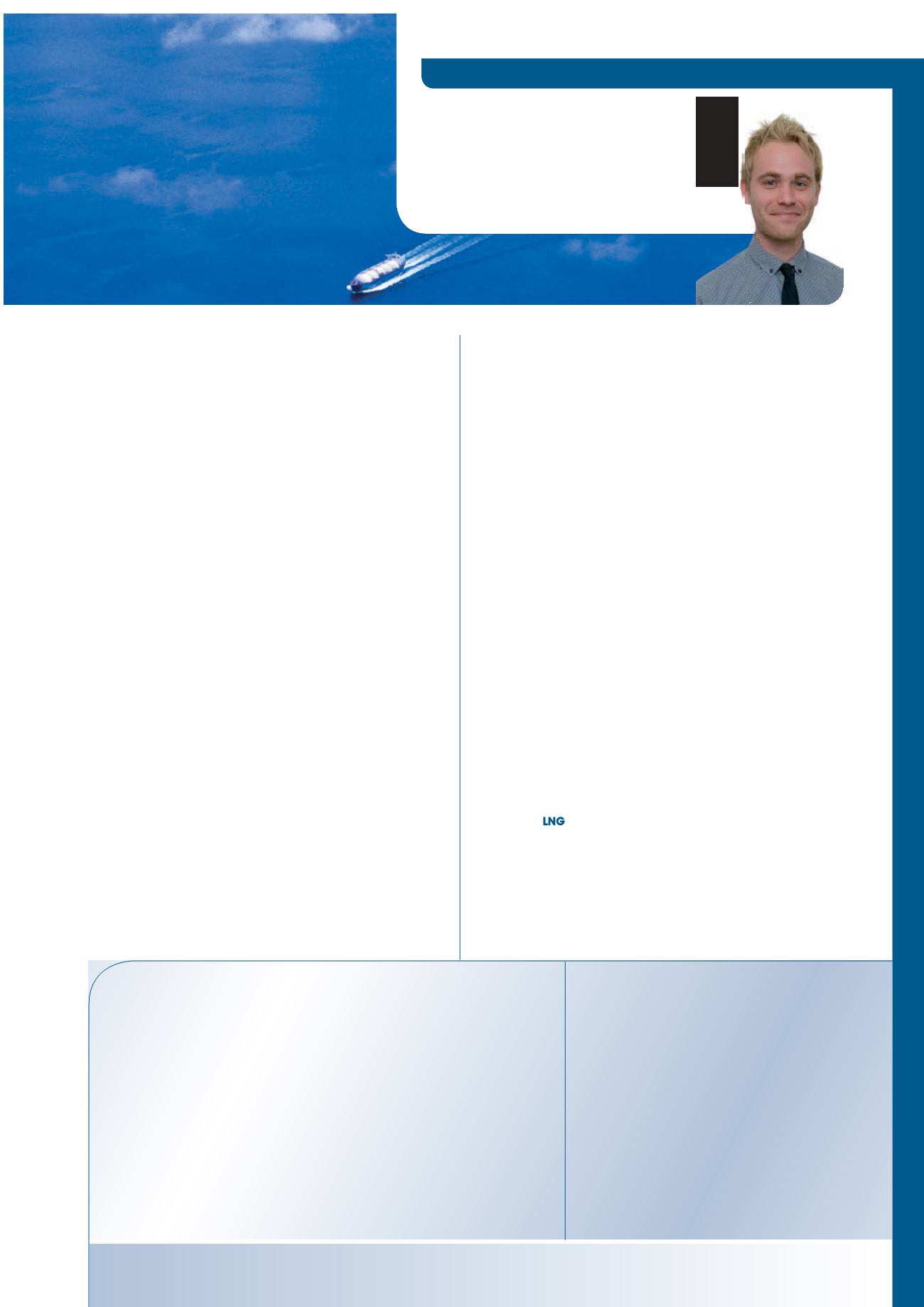
COMMENT
CALLUM O’REILLY
EDITOR
CONTACT INFORMATION
Managing Editor
James Little
Editor
Callum O’Reilly
Editorial Assistant
David Rowlands
Advertisement Director
Rod Hardy
Advertisement Manager
John Baughen
Production
Stephen North
Editorial/Advertisement Offices, Palladian Publications Ltd,
15 South Street, Farnham, Surrey, GU9 7QU, ENGLAND,
Tel: +44 (0) 1252 718 999 Fax: +44 (0) 1252 718 992 Website:
Website Manager
Tom Fullerton
Website Editor
Callum O’Reilly
Digital Editorial Assistant
Angharad Lock
Subscriptions
Laura White
Office Administrator
Jo Repton
Publisher
Nigel Hardy
LNG Industry Subscription rates:
Annual subscription: £50 UK including postage
£60/
d
85 overseas (postage airmail)
US$ 95 USA/Canada (postage airmail).
Two year discounted rate: £80 UK including postage
£96/
d
136 overseas (postage airmail)
US$ 152 USA/Canada (postage airmail).
Subscription claims:
Claims for non receipt of issues must be made within
3 months of publication of the issue
or they will not be honoured without charge.
Applicable only to USA & Canada.
LNG Industry (ISSN No: 1747-1826, USPS No: 006-760) is published
monthly by Palladian Publications Ltd, GBR and distributed in the
USA by Asendia USA, 17B S Middlesex Ave, Monroe NJ 08831.
Periodicals postage paid New Brunswick, NJ and additional mailing
offices. POSTMASTER: send address changes to LNG Industry, 701C
Ashland Ave, Folcroft PA 19032.
Uncaptioned Images courtesy of
and
A
fter more than six years of construction,
the Chevron-led Gorgon LNG project in
Western Australia finally shipped its first cargo
of LNG to Japan in March 2016. According to the US
Energy Information Administration (EIA), the first train
from Gorgon has increased Australia’s LNG export
capacity to 6.2 billion ft
3
/d.
1
This figure is likely to rise
to 11.5 billion ft
3
/d by 2019, once additional planned
developments in the country have become fully operational.
Growing production in Australia has placed increased
downward pressure on the Asian spot price. The latest
‘Seasonal Outlook’ from Thomson Reuters suggests that
the northeast Asian spot price has fallen by almost 35%
since the start of 2016, from US$6.90/million Btu to
US$4.50/million Btu by late March.
2
The authors of the
report expect to see further convergence of Atlantic and
Asian spot LNG prices during the summer months, which
will make Europe an attractive destination for Atlantic
producers, including those from the US. Thomson
Reuters expects an additional 8 billion m
3
of surplus LNG
to arrive into both south and northwest Europe during the
summer.
US LNG exporters would not have originally foreseen
such a narrow difference between oil indexed and
Henry Hub prices, which has resulted in Europe now
emerging as a more attractive destination for US LNG.
In this month’s regional report (starting on p. 12), The
Economist Intelligence Unit (EIU) explains why the
prolonged lower oil price environment has come at a bad
time for US LNG exporters. The EIU believes that US LNG
capacity currently scheduled to come online will not be
fully utilised until global prices and demand growth start
to recover towards the end of the decade. It also foresees
a number of challenges for future North American LNG
projects due to difficulties in attaining supply agreements
with customers in a bearish market.
The US Federal Energy Regulatory Commission’s
(FERC) surprise decision to reject the application
to construct the Jordan Cove LNG terminal and the
Pacific Connector Gas Pipeline can be seen as evidence
of the EIU’s fears. FERC referenced concerns that the
project had failed to demonstrate sufficient commercial
support; an issue that the LNG project’s backer,
Veresen Inc., immediately attempted to redress by
signing a preliminary agreement with JERA Co. Inc. to
cover 25% of the terminal’s capacity.
In spite of these near term fears, the EIU is confident
that the global demand for natural gas will eventually
regain momentum and that the prospects for US LNG
exporters look bright beyond 2020. As such, it is essential
that project developers continue to look to the future,
despite the challenging environment that they currently
face. In this issue of
LNG Industry
, CH
·
IV International
explains how a detailed implementation planning strategy
can help US LNG project applicants efficiently transition
from project development into execution (p. 18). In a
market as unpredictable as ours, maintaining a clear and
detailed plan is the key to keeping costs and schedule
risks low.
1. ‘Australia’s Gorgon, one of the world’s largest LNG
terminals, ships first cargo’, US Energy Information
Administration (EIA), (31 March 2016).
2. BREVIK, A. K., and JACOBSEN, M., ‘Europe –
LNG Summer Outlook 2016’, Thomson Reuters,
(22 March 2016).


